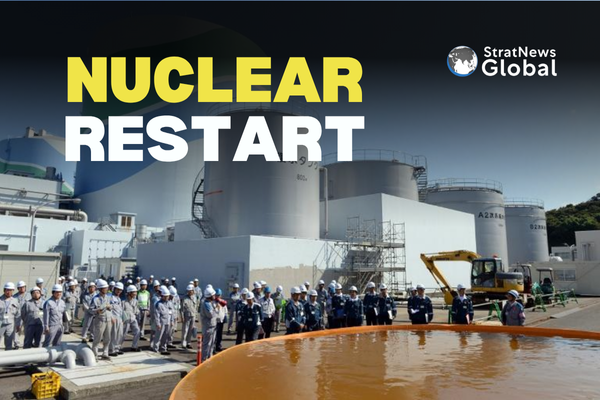The governor of Japan’s Niigata Prefecture, home to the world’s largest nuclear power plant, is preparing to approve its restart as early as this week, according to local media reports on Wednesday. The decision would remove the final barrier to Tokyo Electric Power Company Holdings’ (TEPCO) long-standing goal of bringing the Kashiwazaki-Kariwa facility back online, more than a decade after the Fukushima nuclear disaster prompted its shutdown.
Kyodo News reported that Governor Hideyo Hanazumi is expected to announce his approval by Friday, allowing a partial resumption of operations. Hanazumi will present his decision to the prefectural assembly when its regular session begins on December 2. If endorsed, he will formally notify the national government of his consent, according to the Nikkei business daily.
TEPCO’s Plans and Local Considerations
TEPCO intends to restart the plant’s two largest reactors, Units 6 and 7, which together can produce 2,710 megawatts of electricity. The company may also decommission some of the remaining five reactors. Kashiwazaki-Kariwa’s total capacity stands at 8,212 MW.
In October, TEPCO completed inspections at Unit 6 following fuel loading, confirming that all key systems required for reactor startup were functioning properly. The utility has also pledged 100 billion yen ($644 million) in support for local communities to build trust and secure backing for the restart, a process that has faced years of public and political resistance.
Governor Hanazumi’s expected approval aligns with Prime Minister Sanae Takaichi’s policy of promoting nuclear restarts to strengthen Japan’s energy security and reduce reliance on imported fossil fuels.
Economic and Energy Implications
If Kashiwazaki-Kariwa restarts next year, Japan’s dependence on liquefied natural gas (LNG) imports could fall sharply. Kpler analyst Go Katayama estimated that restarting Unit 6 could displace around one million tonnes of LNG demand in 2025. “We had already lowered Japan’s 2026 demand forecast from 66 million tonnes in 2025 to 63 million tonnes on the back of higher nuclear availability,” Katayama said. “An earlier restart of KK6 would further reduce that to around 62 million tonnes.”
The restart would also be a financial boost for TEPCO, which has faced heavy compensation payments since the 2011 Fukushima disaster. The company estimates that bringing one reactor back online at Kashiwazaki-Kariwa could increase its annual net profit by about 100 billion yen.
Japan has restarted 14 nuclear reactors under stricter safety rules introduced after Fukushima, with 11 currently operating nationwide, generating a combined capacity of 10,647 MW. Before 2011, the country’s utilities ran 54 reactors.
Partial restoration of the Kashiwazaki-Kariwa plant would mark a major step in Japan’s effort to stabilise energy costs, cut carbon emissions, and reinforce its energy independence.
(with inputs from Reuters)





